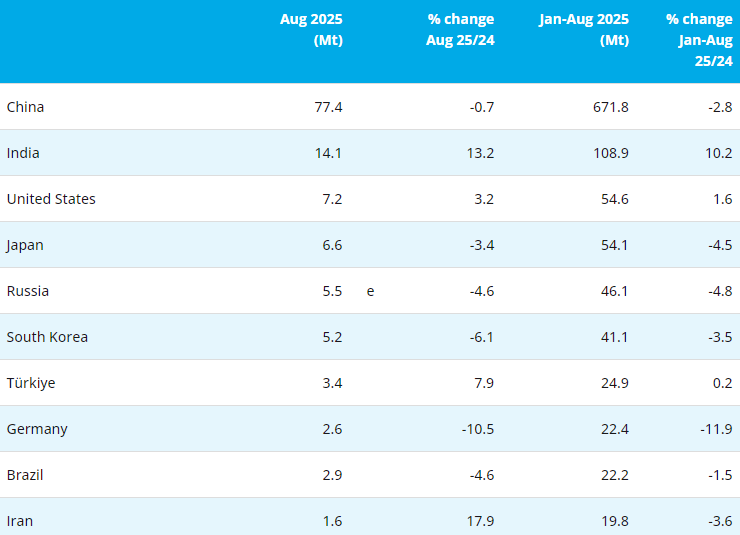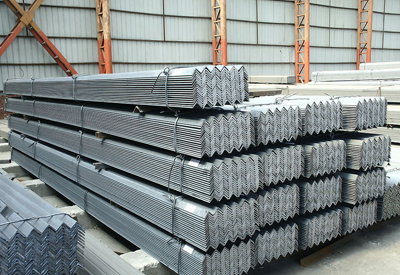In the light of low demand, the aluminum industry needs to see further production cuts and the surplus start to shrink, analysts said at the 2009 ISRI Convention and Exposition in Las Vegas, Nevada Thursday afternoon.
John Tumazos, president of John Tumazos Very Independent Research, and William Adams, Research analyst at Basemetals.com, projected that demand and price recovery on the LME will be slow and steady.
"We entered the year awash with metal at a time when demand was slowing rapidly, so we can't expect a quick recovery," Adams said. "It will be especially slow because of the global economy."
For a recovery, both analysts saw curtailed aluminum output as essential and said the housing and automotive sectors were the key ones to watch.
"I think the key indicators looking forward are restraint in aluminum smelter output, the cancellation of aluminum plant construction, plus looking at new automotive sales and housing construction worldwide," Tumazos said.
Adams projected an aluminum surplus of 2 million mt and an average price of $1,300/mt , or about 59 cents/lb in 2009 -- well below the average price of aluminum from 1980-2008 which was $1,634/mt, or 74 cents/lb.
"We've had a very fast and furious adjustment in the last six to nine months," he said. "Today's prices are 20% below the long term average. The outlook is very hazy ... Don't expect a quick fix or a strong rebound. Debt is very high and companies are still laying-off. All in all there is little room for optimism, other than in China."
Tumazos was more bullish on prices, projecting the average aluminum price in 2009 at 63 cents/lb. He estimated that it would increase to 70 cents/lb in 2010, 75 cents/lb in 2011, 85 cents/lb in 2012 and 95 cents/lb in 2013.
CALL FOR MORE OUTPUT CUTS
Both analysts saw little upside in terms of demand in the near term and called on producers to take more capacity offline, in line with low demand.
"Looking forward, demand looks very weak, as first quarter automotive sales were down 40% year on year, and housing starts in March plummeted by 48% over last year's figures," Tumazos said.
For the full year, Adams forecast aluminum demand would drop by 6% while Tumazos said he saw full-year demand to fall 15%. "We estimate that first quarter global demand dropped by 21%, and for the year, 2009 will see a demand drop of 15%, after a 3% drop seen in 2008," he said. "Normal auto, appliance and housing markets will be at 80% of prior peak levels."
Tumazos estimated that quarterly global demand peaked at 11.91 million mt in the second quarter of 2008 and bottomed at 9.08 million mt in the first quarter of 2009. The analyst projected that demand would increase to 9.5 million mt in the second quarter of the year, before rising to 9.95 million mt in the fourth quarter.
On the supply side, both analysts said production cuts made in the past year worked to partially inhibit a higher surplus, but urged that more curtailments were needed to bring the market into balance.
"With output down 14% from the peak and demand down 19% so far this year -- on top of the 3% decline seen last year -- it's important that more output cuts occur," Tumazos said. "The current 4.033 million commodity exchange surplus combined in the LME, Shanghai and COMEX exchanges stems from Alcoa, Rio Tinto, Alcan and others outside of China producing more metal than buyers needed. "
Adams pointed out that just over 6 million mt production had been cut, but global output fell 10% in January-February year on year. As a result, he estimated that an additional 2 million mt of aluminum capacity needed to come offline.
Assessing stocks in LME warehouses, Adams said that in the early 1990s LME stocks increased to 2.6 million mt, while stock levels are approaching 3.8 million mt. "So there is an excess, or a very large amount of stocks," he said. Still, he added, in 1992 the amount of material in LME warehouse accounted for 14% of consumption while on a comparative basis the amount of stocks sitting in LME warehouses today amount to just 9% of global consumption.
NOT ALL GLOOM AND DOOM
But the aluminum outlook wasn't all dreary, said Tumazos pointing to Chinese automotive sales as a bright spot. "Chinese auto sales in March were a record 1.1 million units. Chinese auto sales in February were up 21% from a year ago. Lead, platinum and palladium show signs of tightness and they are related to automotive," he said. "The automotive market is not universally bad."
Still, he was cautious about seeing an increase in automotive and housing starts as a sign of recovery. "I expect better auto and housing sales because of distressed prices, but not as an indication of economic health."
Adams agreed that there was hope of upturn in the industry, although the pace may be slower than desired. "It's not all gloom, but it's not bullish either. Demand is down, but there have been production cutbacks and stimulus packages," he said. "Most of these packages have placed an emphasis on infrastructure and from these stimulus packages we expect orders will filter down to the market."
Asked whether the worst was over, Adams replied: "To a large extent, probably yes. The flip from deficit to surplus has been rapid, but rising LME stocks make things look worse than they are. We need to watch LME stocks and canceled warrants, and I think in recent weeks we have seen a pickup in outflow and of canceled warrants." –Platts
Copyright © 2013 Ferro-Alloys.Com. All Rights Reserved. Without permission, any unit and individual shall not copy or reprint!
- [Editor:editor]



 Save
Save Print
Print Daily News
Daily News Research
Research Magazine
Magazine Company Database
Company Database Customized Database
Customized Database Conferences
Conferences Advertisement
Advertisement Trade
Trade













 Online inquiry
Online inquiry Contact
Contact

Tell Us What You Think